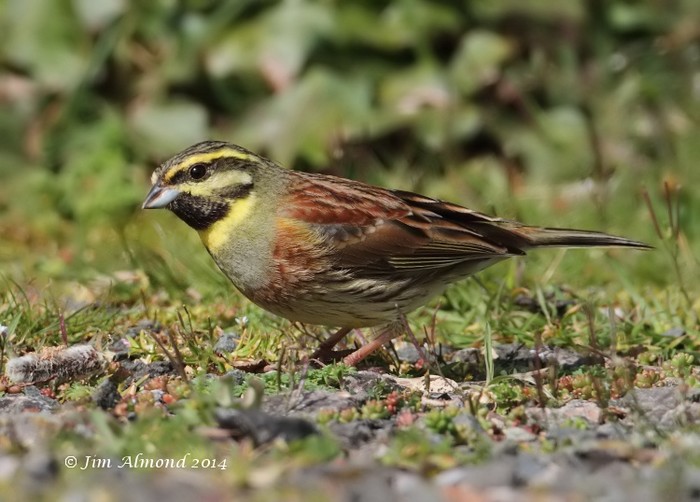A Record-Breaking Year for the Cirl Bunting Reintroduction Project
A project to bring the rare Cirl Bunting back to Cornwall is celebrating its best year to date

Cornwall’s re-introduced population of Cirl Buntings has this year seen its best ever breeding productivity, with 39 pairs producing over 100 fledglings at the Roseland site. With the population showing every sign of becoming established, this novel project to reintroduce a passerine in Europe has so far been a great success.
Cath Jeffs, RSPB Cirl Bunting Project Manager welcomed the news; “These are encouraging signs that the population is on its way to becoming self-sustaining, and as the first passerine reintroduction to take place in Europe, the project can be considered a huge success.”
Since the first hand-reared birds were released in 2006, Cirl Bunting numbers have been steadily increasing in Cornwall, as has their range, with new breeding territories discovered each year. By attaching coloured leg-rings to all the released birds, it has been possible to monitor their movements to discover their habitat preferences and breeding success. The last birds were released in 2011, and in 2012 the population was 44 pairs. Following a wet summer in that year and a reduction in numbers to 28 pairs in 2013, the population has subsequently increased again.
Ms Jeffs said; “The success of this reintroduction represents a fantastic example of collaborative working. A partnership project, the RSPB works with local farmers along with the National Trust to increase the amount of suitable habitat for the birds, and a farmland advisor works with landowners to secure further habitat for the wider, natural spread of birds through Natural England’s agri-environment schemes.”
The Cirl Bunting chicks were hand-reared by staff from Paignton Zoo and their health closely monitored by the Zoological Society of London (ZSL).
The project has been jointly funded by the RSPB and Natural England, as well as receiving £173,670 from SITA Trust and £5,000 from BBC Wildlife Fund.
This year the long, fine, summer weather provided the best possible conditions to enable increased success across all the summer months. Just 21% of pairs failed to produce fledged young compared to an average of 29% for all other previous years of the project and far more pairs than usual successfully fledged more than one brood. One pair even managed to fledge three boods – only the second time this has been recorded on the project.
Next year, it is predicted that the population will exceed the milestone of 50 pairs, which would be a great achievement and by 2016, it is unlikely that there will be any remaining colour-ringed birds, meaning the population will be 100% Cornish. The key to the future of this project is ensuring that the right habitat is provided through the delivery of agri-environment schemes. If the habitat is there, the birds will continue to flourish.
Ms Jeffs added; “In the future we plan to develop a reduced-intensity monitoring strategy designed to identify any problems that may occur. Continuing farmer and community liaison is a top priority, as is the delivery of key sites and reserves across the entire range of Cirl Buntings in Cornwall and Devon, using Labrador Bay in Devon as the perfect model. We also plan to complete the compilation of all data and associated project information in to one document and hopefully, celebrate the achievement of reaching 50 pairs in Cornwall next year with all of our partners.”
RSPB
21 November 2014




